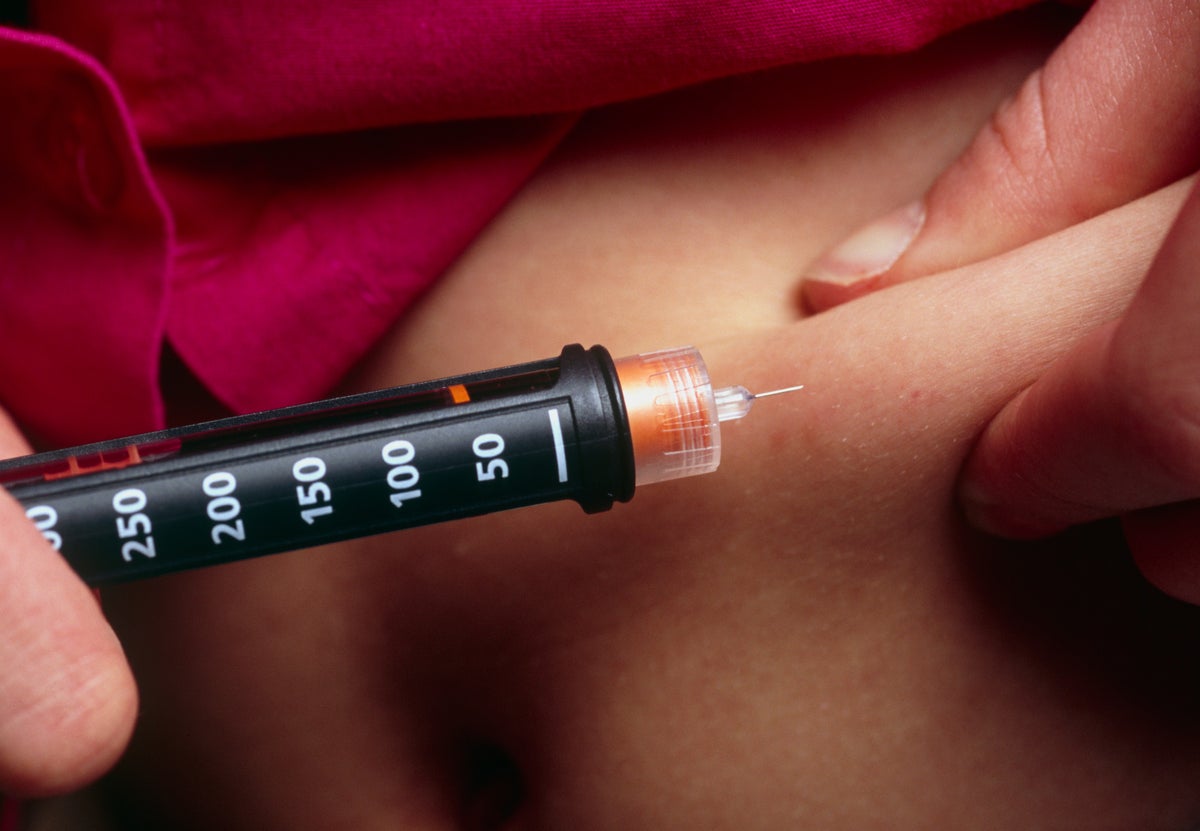.png.webp)
Dr. Ashwini
06-01-2025
Can You Tell the Difference Between Type 1 and Type 2 Diabetes?
Diabetes is an ongoing ailment that influences how your body processes glucose (glucose). While both Type 1 and Type 2 diabetes involve problems with insulin, the causes, age of onset, and treatment methods can vary significantly. Understanding the differences between these two types of diabetes is crucial for managing the condition and making informed health decisions. Here’s a breakdown of the key differences between Type 1 and Type 2 diabetes:
1. Causes and Development
-
Type 1 Diabetes (T1D): Type 1 diabetes is an immune system illness. The body's safe framework erroneously assaults and obliterates the insulin-creating beta cells in the pancreas. Without insulin, the body can't manage glucose levels successfully.
- Cause: Autoimmune response that attacks the pancreas.
- Onset: Commonly creates in kids, youths, or youthful grown-ups, yet can happen at whatever stage in life.
- Insulin Dependency: People with Type 1 diabetes must take insulin every day for the rest of their lives, either through injections or an insulin pump.
-
Type 2 Diabetes (T2D): In Type 2 diabetes, the body either becomes resistant to insulin or doesn’t produce enough insulin. Over the long run, this prompts high glucose levels. While it often has a genetic component, lifestyle factors such as poor diet, obesity, and lack of physical activity play a major role in its development.
- Cause: Insulin resistance and reduced insulin production.
- Onset: Typically develops in adults over the age of 45, but is increasingly being diagnosed in younger individuals due to rising obesity rates.
- Insulin Dependency: People with Type 2 diabetes may initially manage the condition with lifestyle changes, oral medications, and in some cases, insulin injections if the condition worsens.

2. Symptoms
Both types of diabetes share common symptoms, such as excessive thirst, frequent urination, unexplained weight loss, fatigue, and blurry vision. However, there are some notable differences in how the symptoms appear and progress.
-
Type 1 Diabetes: Symptoms tend to develop suddenly and progress quickly, often in childhood or adolescence. People may experience:
- Rapid weight loss despite increased appetite
- Frequent urination and excessive thirst
- Fatigue and irritability
- Nausea or vomiting (in severe cases, leading to diabetic ketoacidosis, or DKA)
-
Type 2 Diabetes: Symptoms often develop more gradually and can be less noticeable in the early stages. Some people may not have any symptoms at all, especially in the early years. Common symptoms include:
- Increased thirst and frequent urination
- Fatigue or tiredness
- Slow healing of wounds or infections
- Dark patches of skin (often in the armpits or neck area)
- Numbness or tingling in hands or feet (due to nerve damage)
3. Risk Factors
-
Type 1 Diabetes:
- Genetic predisposition: Family history of Type 1 diabetes may increase the risk.
- Age: Most commonly diagnosed in children, teens, or young adults.
- Autoimmune conditions: Other autoimmune diseases like celiac disease or autoimmune thyroid conditions may increase the risk.
-
Type 2 Diabetes:
- Weight: Overabundance muscle versus fat, particularly around the midsection, is a significant gamble factor.
- Age: Chance increments with age, especially following 45 years.
- Family history: A family history of Type 2 diabetes can increase the likelihood of developing the condition.
- Actual latency: Absence of activity adds to insulin obstruction.
- Poor diet: Diets high in processed foods, sugars, and fats can lead to Type 2 diabetes.
4. Treatment and Management
-
Type 1 Diabetes:
- Insulin therapy: Insulin is a necessary treatment. This can be conveyed through infusions or an insulin siphon.
- Blood sugar monitoring: Frequent testing of blood glucose levels is crucial.
- Diet and exercise: A healthy, balanced diet and regular physical activity are important for managing blood sugar levels and overall health.
-
Type 2 Diabetes:
- Lifestyle changes: The first step in managing Type 2 diabetes is improving diet and increasing physical activity to help reduce insulin resistance.
- Oral medications: Drugs like metformin help manage blood sugar by improving insulin sensitivity.
- Insulin or other injectable medications: If lifestyle changes and oral medications are not enough to control blood sugar, insulin or other injectables may be prescribed.
- Blood sugar monitoring: Regular monitoring of blood glucose levels is essential to ensure they stay within a target range.
5. Long-Term Complications
Both types of diabetes can lead to long-term complications if not properly managed, but the risk of complications is more pronounced in Type 2 diabetes due to its gradual development and the longer duration of undiagnosed or poorly controlled blood sugar levels.
-
Common complications of both types:
- Heart disease
- Stroke
- Kidney damage (diabetic nephropathy)
- Nerve damage (diabetic neuropathy)
- Vision problems (diabetic retinopathy)
- Poor circulation, leading to foot problems
-
Type 1 Diabetes Complications:
- Risk of diabetic ketoacidosis (DKA) if blood sugar becomes extremely high and insulin is not properly managed.
-
Type 2 Diabetes Complications:
- Higher risk of developing chronic conditions like high blood pressure, high cholesterol, and obesity.
6. Prevention
-
Type 1 Diabetes:
There are currently no known methods to prevent Type 1 diabetes, as it is an autoimmune condition. However, early diagnosis and proper management can help prevent complications. -
Type 2 Diabetes:
Many cases of Type 2 diabetes can be prevented or delayed with lifestyle changes, including:- Maintaining a healthy weight
- Eating a balanced, nutrient-rich diet
- Engaging in regular physical activity
- Avoiding smoking and excessive alcohol consumption
Conclusion: Key Differences Between Type 1 and Type 2 Diabetes
While both Type 1 and Type 2 diabetes involve issues with insulin and blood sugar regulation, the causes, onset, and treatment approaches differ significantly. Type 1 diabetes is an immune system sickness generally analyzed in youth or pre-adulthood, requiring long lasting insulin treatment. On the other hand, Type 2 diabetes is often related to lifestyle factors and can be managed with lifestyle changes, oral medications, and sometimes insulin.

FAQs:
1. What is the difference between Type 1 and Type 2 diabetes?
- Type 1 Diabetes (T1D): An autoimmune condition where the body's immune system attacks and destroys insulin-producing cells in the pancreas, leading to an inability to produce insulin.
- Type 2 Diabetes (T2D): A metabolic disorder where the body becomes resistant to insulin or the pancreas doesn't produce enough insulin to maintain normal blood sugar levels.
2. What causes Type 1 diabetes?
Type 1 diabetes is caused by an autoimmune response, where the immune system mistakenly attacks and destroys insulin-producing beta cells in the pancreas. The exact cause is not fully understood but is believed to involve genetic and environmental factors, such as viral infections.
3. What causes Type 2 diabetes?
Type 2 diabetes is primarily caused by insulin resistance, where the body’s cells do not respond properly to insulin. Over the long run, the pancreas can't deliver sufficient insulin to redress. Factors contributing to T2D include obesity, poor diet, lack of physical activity, and genetics.
4. What are the symptoms of Type 1 diabetes?
Symptoms of Type 1 diabetes typically develop rapidly and may include:
- Frequent urination
- Increased thirst
- Unexplained weight loss
- Fatigue
- Blurred vision
- Increased hunger
5. What are the symptoms of Type 2 diabetes?
Side effects of Type 2 diabetes frequently grow slowly and may include:
- Increased thirst and urination
- Fatigue
- Blurred vision
- Slow-healing sores or cuts
- Numbness or tingling in the hands or feet
- Dark skin patches (Acanthosis nigricans)
6. How is Type 1 diabetes diagnosed?
Type 1 diabetes is typically diagnosed through:
- Blood tests measuring blood sugar levels (fasting blood glucose, random blood glucose, or A1C test).
- Urine tests for ketones (a byproduct of fat breakdown that can indicate diabetic ketoacidosis, a common complication of Type 1).
7. How is Type 2 diabetes diagnosed?
Type 2 diabetes is diagnosed using similar blood tests:
- Fasting blood sugar test (blood sugar after fasting for at least 8 hours).
- A1C test (measures the average blood sugar over the past 2-3 months).
- Oral glucose tolerance test (OGTT), which tests blood sugar after drinking a sugary solution.
8. Who is at risk for Type 1 diabetes?
Type 1 diabetes usually develops in children and young adults, though it can occur at any age. Genetic factors play a significant role, and family history of the disease can increase the risk.
9. Who is at risk for Type 2 diabetes?
Type 2 diabetes is more common in adults but can also affect children. Risk factors include:
- Age (especially over 45 years old)
- Obesity
- Lack of physical activity
- Family history of Type 2 diabetes
- Ethnicity (higher risk among African American, Hispanic, and Native American populations)
- High blood pressure or high cholesterol
10. Can Type 1 diabetes be prevented?
No, Type 1 diabetes cannot be prevented. It is an autoimmune condition with genetic factors that currently cannot be altered or avoided.
11. Can Type 2 diabetes be prevented?
Yes, Type 2 diabetes can often be prevented or delayed with lifestyle changes, such as:
- Maintaining a healthy weight
- Eating a balanced diet with limited processed foods and sugar
- Increasing physical activity
- Managing stress
- Regularly monitoring blood sugar levels, especially if at risk
12. How is Type 1 diabetes treated?
Treatment for Type 1 diabetes involves:
- Insulin therapy: Since the body no longer produces insulin, people with Type 1 diabetes need to take insulin through injections or an insulin pump.
- Blood sugar monitoring: Regularly checking blood glucose levels to adjust insulin doses.
- Diet and exercise management: A balanced diet and regular exercise help control blood sugar levels.
13. How is Type 2 diabetes treated?
Treatment for Type 2 diabetes may include:
- Lifestyle changes: Healthy eating, weight loss, and regular physical activity.
- Oral medications: Such as metformin, which helps improve insulin sensitivity and reduce glucose production.
- Insulin or other injectable medications: In some cases, when blood sugar is not controlled with oral medications alone.
- Blood sugar monitoring: Regular testing to keep blood glucose within the target range.



